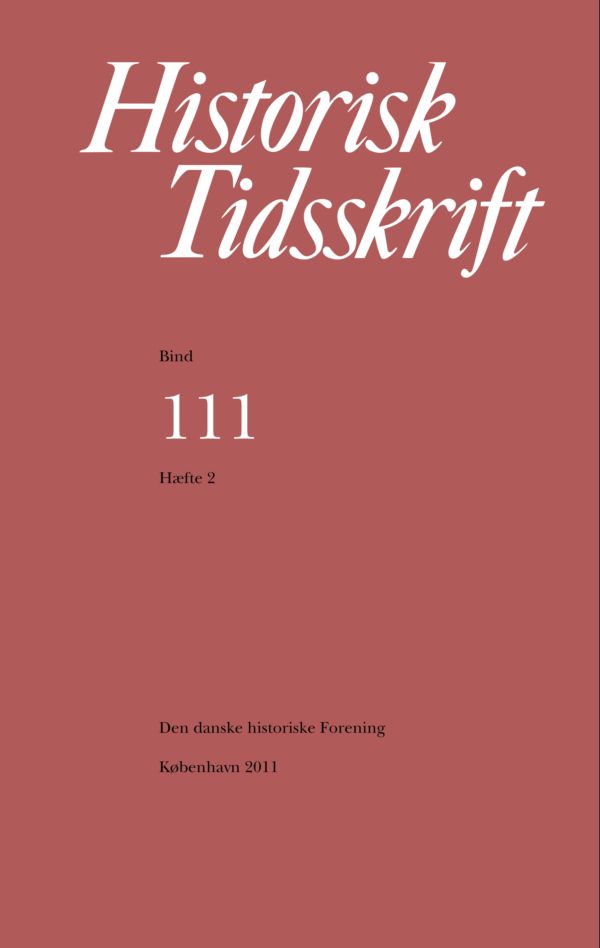Dansk kulturdiplomati over for Østblokken ca. 1960-1972
Resumé
Danish Cultural Diplomacy Towards the Eastern Bloc, c. 1960-1972In 1960, within the context of NATO, a number of countries established Nato’s working committee on cultural relations with the Eastern Bloc. Among their motives was the fact that Nikita Khrush chev, the Soviet General Secretary, from the end of the 1950s had taken up cultural diplomacy as a foreign policy tool, aiming at changing the relationship between East and West. Denmark joined the club in 1963 after having concluded its first official agreement on cultural cooperation with the USSR the previous year. Based on archival material from the Danish Ministry of Foreign Affairs, the present article analyses the successive changes in ends and means for Danish cultural diplomacy during the period leading up to the Helsinki Conference on Security and Co-operation in Europe (CSCE) in 1975. From a modest start in the beginning of the 1960s, agreements on cultural exchange became important elements in a new strategic approach towards the countries east of the Iron Curtain. Given the fact that the sources in question stem from the Danish administration’s participation in a NATO subcommittee, the article renders, at the same time, an impression of the positions taken by the other countries. Important lines of separation existed between Continental Europe and the US, frequently supported by the British, who considered the free flow of information an all-important principle that must be actively claimed in each and every talk on cultural exchange with the Eastern Bloc. It entailed, among other things, that Western broadcasters should not have their transmissions disturbed by jamming. As far as the content of the exchange was concerned, Americans remained confident that the display of their own consumer durables and lifestyle was the most potent means of influence. France, on the other hand, gave priority to elite culture and French language proficiency, to be disseminated by the Alliance française and French state-operated cultural institutes in Eastern Europe. Denmark tried out an altogether different option, dedicating resources to socio-cultural exchange, especially for young people, but also on broader terms, in order to create direct contact between individuals and provide opportunity for comparing and discussing social systems and their development. High lights of ‘modern Denmark’ were presented with considerable pride: from council houses, over public welfare institutions, to Danish folk high schools. A firm conviction of the positive effects from cultural exchange agreements was channeled into a political initiative: In 1971 Denmark offered herself as a mediator between American and Continental European positions. It happened when cultural exchange, information, education and human contact – the Third Basket – were incorporated into the CSCE process. A core element in the Danish proposition was to abstain from introducing free flow of information as an issue from the very beginning of negotiations. The alternative to the procedure preferred by the US was, metaphorically speaking, to take advantage of cultural exchange agreements as a crowbar which might open the door only gradually, but with more ease and certainty. The rationale of betting on not free, but freer flows of information, people and ideas was the same as the one behind German Ostpolitik: change driven by rapprochement. Thus, the article is a contribution to the historiography on cultural exchange between East and West during the Cold War as well as on the CSCE process and European détente policy.Downloads
Publiceret
Citation/Eksport
Nummer
Sektion
Licens
Ophavsret til bidrag i Historisk Tidsskrift tilhører forfatterne og Den danske historiske Forening som udgiver af Historisk Tidsskrift. For illustrationer gælder den ophavsret, som står anført i billedteksten. Ophavsretslovens almindelige bestemmelser gælder, hvilket vil sige, at ophavsretten gælder i 70 år efter forfatterens død. Bidrag i Historisk Tidsskrift må derfor, med forbehold for en ”moving wall” på tre år, frit downloades, læses, gemmes, anvendes og citeres (med kildeangivelse) i privat og videnskabelig sammenhæng, men de må ikke helt eller delvis genudgives af tredjepart, heller ikke i redigeret form, uden tilladelse fra forfatterne og Den danske historiske Forening. Henvendelse skal i så fald rettes til Historisk Tidsskrifts redaktion på histtid@hum.ku.dk.





